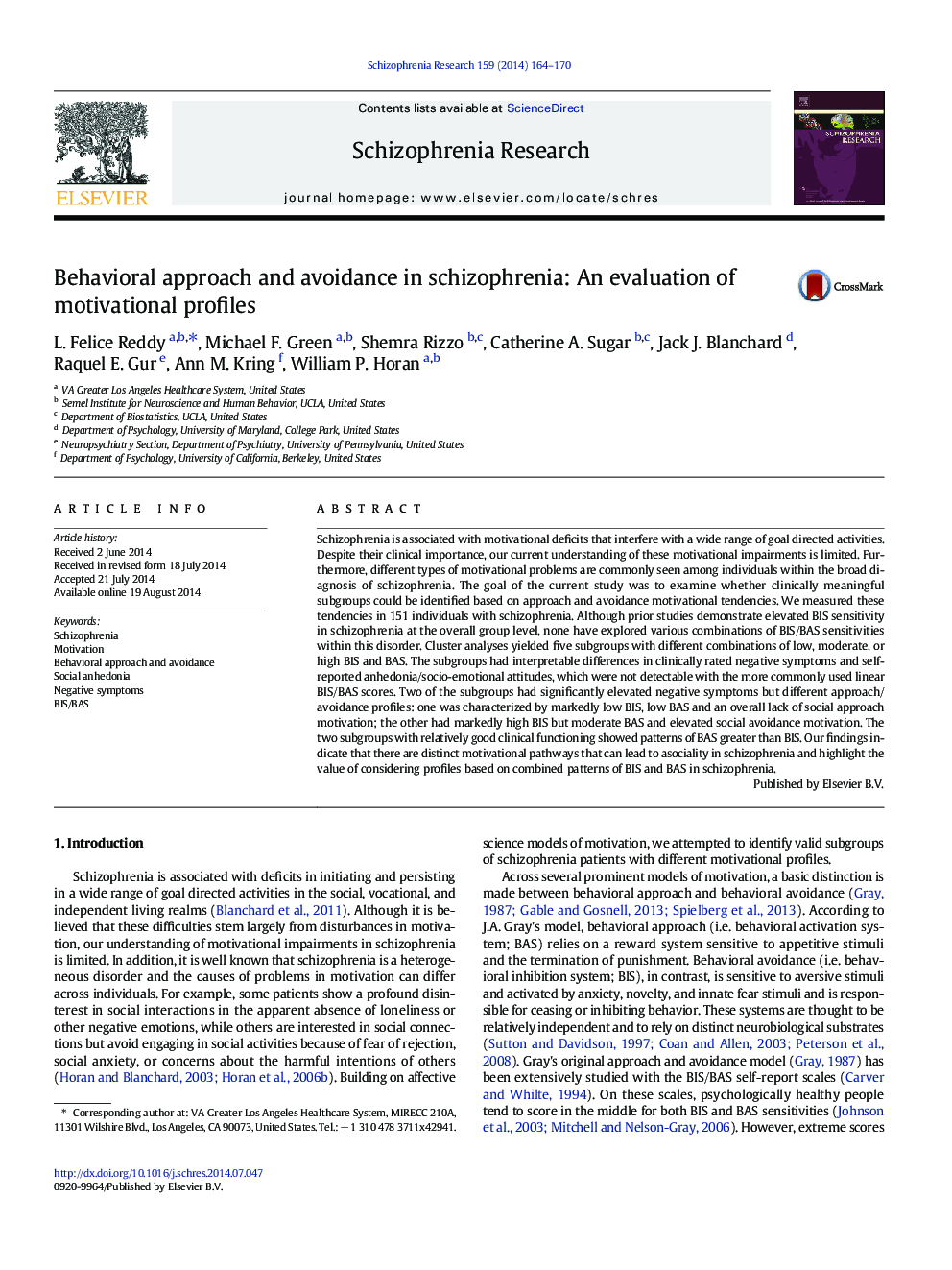| Article ID | Journal | Published Year | Pages | File Type |
|---|---|---|---|---|
| 10307734 | Schizophrenia Research | 2014 | 7 Pages |
Abstract
Schizophrenia is associated with motivational deficits that interfere with a wide range of goal directed activities. Despite their clinical importance, our current understanding of these motivational impairments is limited. Furthermore, different types of motivational problems are commonly seen among individuals within the broad diagnosis of schizophrenia. The goal of the current study was to examine whether clinically meaningful subgroups could be identified based on approach and avoidance motivational tendencies. We measured these tendencies in 151 individuals with schizophrenia. Although prior studies demonstrate elevated BIS sensitivity in schizophrenia at the overall group level, none have explored various combinations of BIS/BAS sensitivities within this disorder. Cluster analyses yielded five subgroups with different combinations of low, moderate, or high BIS and BAS. The subgroups had interpretable differences in clinically rated negative symptoms and self-reported anhedonia/socio-emotional attitudes, which were not detectable with the more commonly used linear BIS/BAS scores. Two of the subgroups had significantly elevated negative symptoms but different approach/avoidance profiles: one was characterized by markedly low BIS, low BAS and an overall lack of social approach motivation; the other had markedly high BIS but moderate BAS and elevated social avoidance motivation. The two subgroups with relatively good clinical functioning showed patterns of BAS greater than BIS. Our findings indicate that there are distinct motivational pathways that can lead to asociality in schizophrenia and highlight the value of considering profiles based on combined patterns of BIS and BAS in schizophrenia.
Related Topics
Life Sciences
Neuroscience
Behavioral Neuroscience
Authors
L. Felice Reddy, Michael F. Green, Shemra Rizzo, Catherine A. Sugar, Jack J. Blanchard, Raquel E. Gur, Ann M. Kring, William P. Horan,
